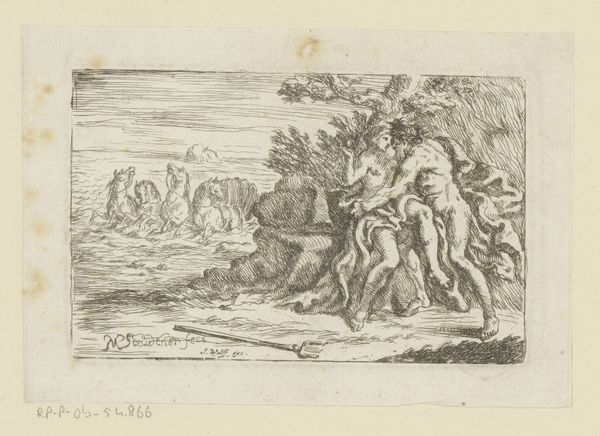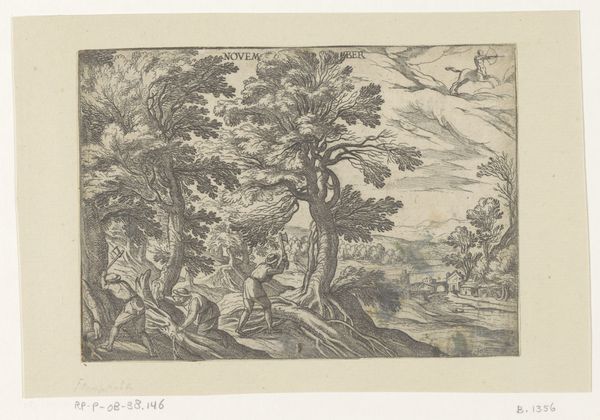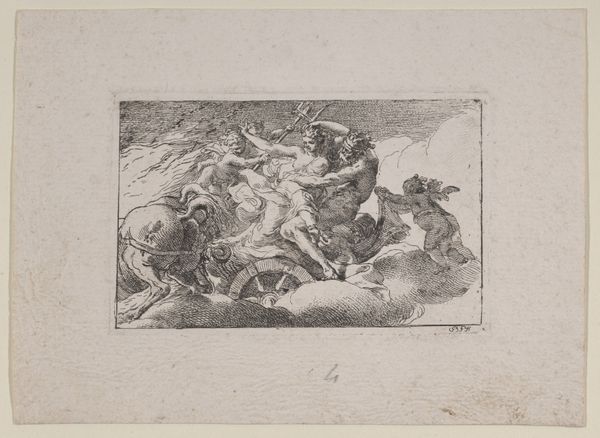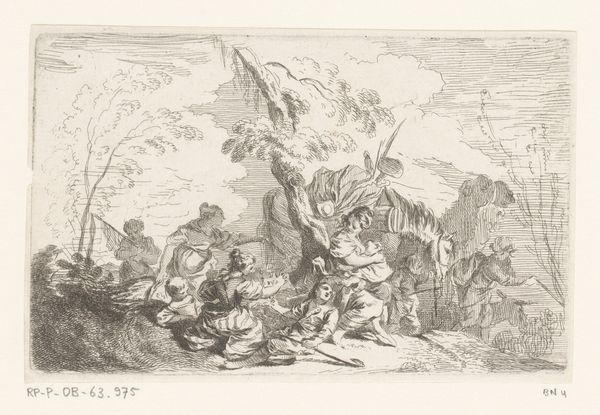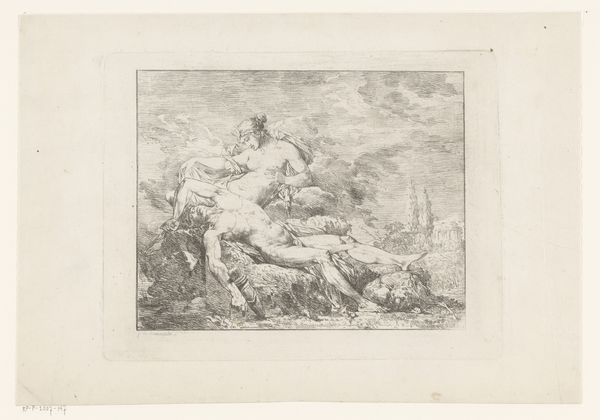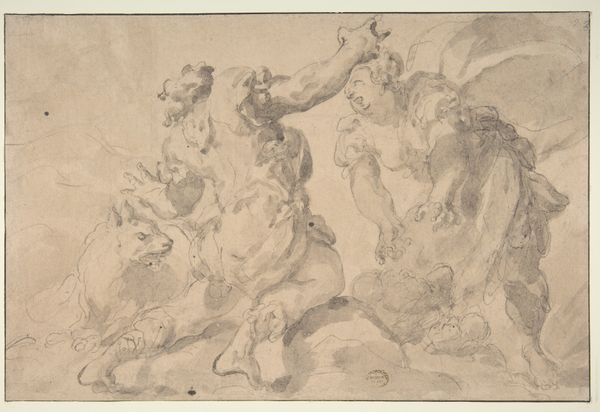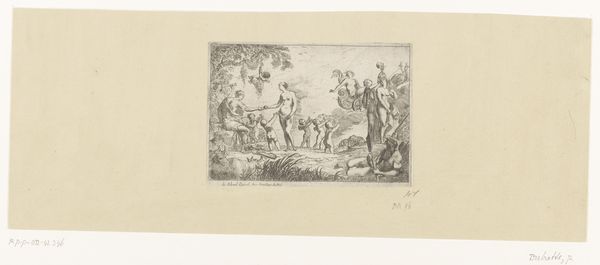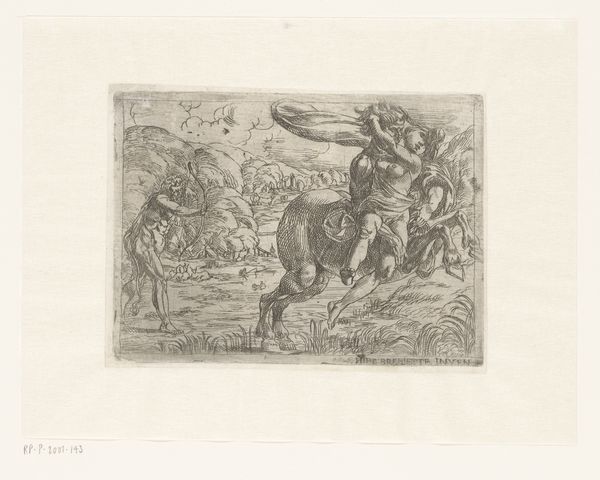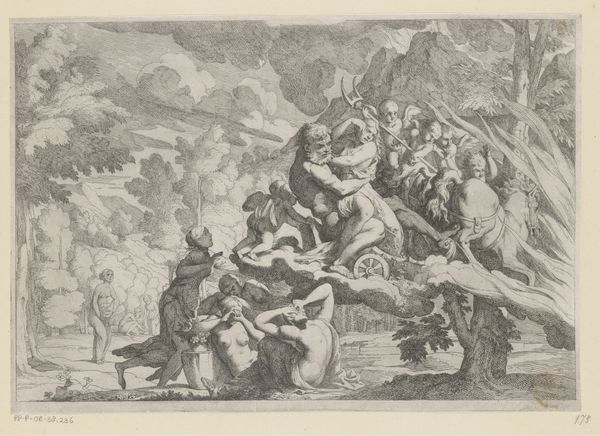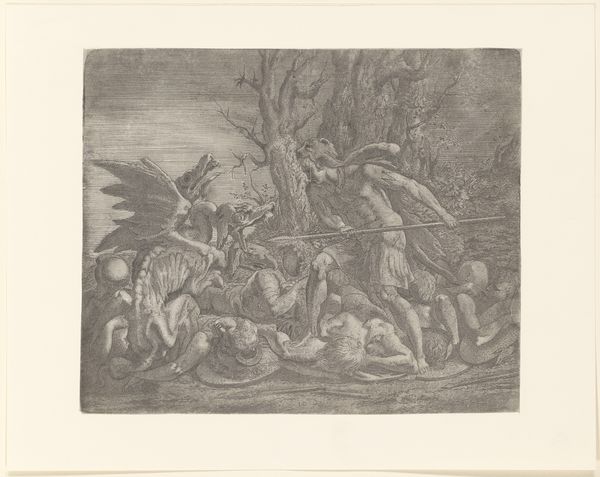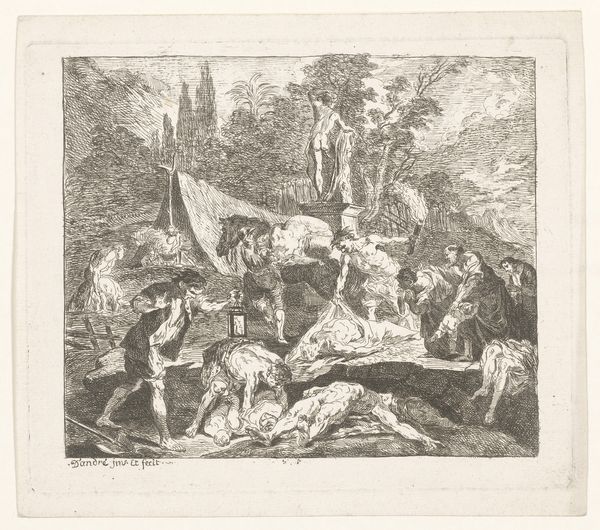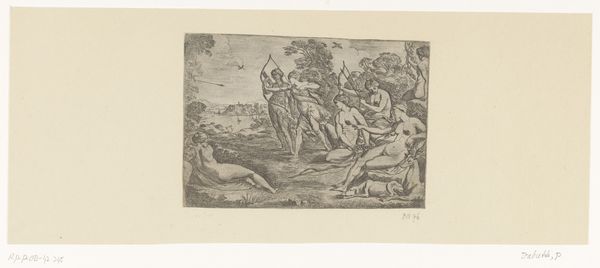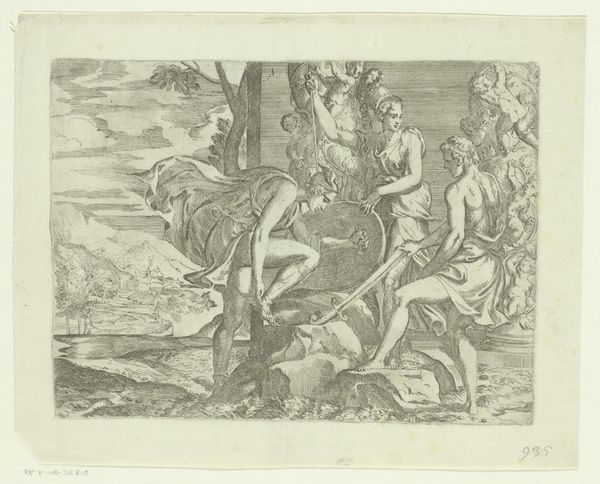
drawing, print, etching, paper, ink, engraving
#
drawing
#
comic strip sketch
#
light pencil work
# print
#
etching
#
pencil sketch
#
landscape
#
figuration
#
paper
#
personal sketchbook
#
ink
#
sketchwork
#
ink drawing experimentation
#
pen-ink sketch
#
sketchbook drawing
#
genre-painting
#
storyboard and sketchbook work
#
italian-renaissance
#
sketchbook art
#
engraving
Dimensions: height 106 mm, width 148 mm
Copyright: Rijks Museum: Open Domain
Curator: Looking at this etching from the Italian Renaissance, likely crafted between 1520 and 1550, titled "Diana op jacht" and attributed to Antonio da Trento, what’s your first take? Editor: It feels quite restless, doesn’t it? There's a palpable sense of motion in the lines. The figure and the pack of hounds almost burst off the paper. It evokes a raw, untamed energy. Curator: Indeed. Da Trento was a printmaker operating within a very specific environment. The workshops of the Renaissance influenced heavily both the subject and circulation of such prints. Images of classical goddesses, for instance, gained considerable traction with the burgeoning humanist movement, re-evaluating classical stories for contemporary meaning. Editor: Considering this classical influence, how do we interpret Diana in the modern era, a goddess traditionally linked to both the hunt and to virginity, now complicated by current discourse around autonomy, gender, and sexuality? Curator: Exactly! This brings a critical lens. Diana’s independence, symbolized through her domain over the wilderness and hunting, challenges patriarchal norms. How do we see this female power represented and received within a historical patriarchal context and even now? The political ramifications of visual representation, especially relating to women, require such reevaluation. Editor: I find the pack of dogs fascinating too. Dogs, often symbols of loyalty and subservience, are here an extension of Diana's will and power. There's something inherently violent about a hunt. How might an examination into the social contexts and impacts of hunting as a sport, especially considering its connection with aristocracy and control over natural resources, re-shape our understanding of this artwork? Curator: Excellent points. Prints like this also functioned within a developing market economy, making classical ideals accessible to broader audiences and democratizing, in a way, access to aristocratic and intellectual imagery. However, the dissemination was rarely unbiased. The values embedded required unpacking, just as we do today. Editor: Reflecting on this work through that lens has been enriching. There’s much more beneath the surface here than just a mythological hunt scene. Curator: Yes, it pushes us to rethink power dynamics, access to resources and narrative control, and representation throughout history, as we see "Diana op jacht" engaging not just classical imagery but contemporary social questions.
Comments
No comments
Be the first to comment and join the conversation on the ultimate creative platform.
